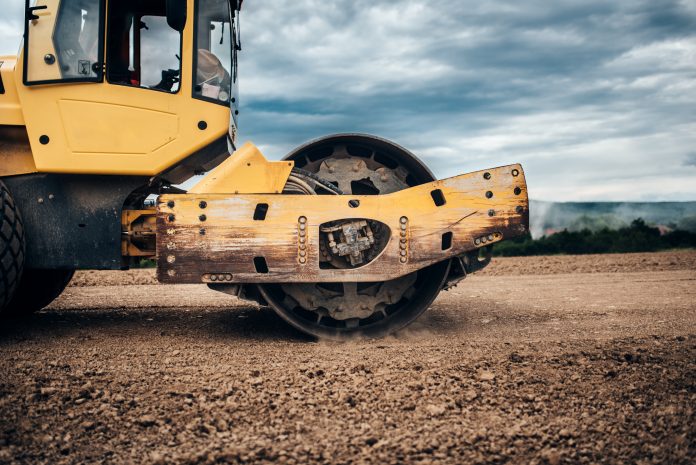Ross Goodband, senior geo-environmental engineer at multi-disciplinary consultancy Pick Everard, unearths the compliance pitfalls to avoid and the pathways to take to ensure soil reuse does not become a recycling afterthought
The reuse and movement of waste soils is one of the most common occurrences on construction sites, as built environment specialists strive to maintain costs, maximise resource efficiency and hit wider recycling targets on the path to net zero. Yet despite its sustainable profitability, many project managers are left in the dirt regarding regulatory compliance.
When naturally occurring, the use of soil on construction sites should in theory, be a straightforward process.
Soil reuse can save projects money and time
Typically used as the foundation for all manner of groundworks, soil can be a huge project time and cost saver if reused in an effective manner. The largest carbon store on earth, soil is vital in the quest for net zero. It can be a key indicator for meeting sustainability targets for project managers striving ever to reduce their emissions output.
However, the results are eyewatering when we look at the statistics governing soil reuse. It is estimated by the Environment Agency that 1bn tonnes of soil and aggregates are sent to landfill as a result of construction activities each year, with no formal measures in place to prevent this activity.
More staggeringly, research suggests the construction sector is currently paying over £3bn per annum to dispose of waste soil from building sites across the UK and France.
More sustainable means of soil control are needed
With costs spiralling out of control, it’s clear that more sustainable means of soil control are needed. And with the Environment Agency citing key examples of soil misuse to both prevent and highlight the issue, it’s high time the construction industry got on board with its reuse from a compliance, carbon reduction and profitability perspective.
To begin this journey, it’s worth taking the time to understand when soil is considered a waste, and when it is not. And while there are all manner of complexities when it comes to planning permission, brownfield/greenfield sites, generally speaking there are simplified rules project managers can abide by to begin to understand soil and its reuse journey.
When made ground is dug up, present as stockpiles already on site, or natural soils are taken off site, it is considered to be waste under the Waste Framework Directive (WFD) – the European Union Directive concerned with measures to protect the environment and human health. On the other side of the coin, you have what is understood to be outside of the WFD’s definition of waste. This is natural soil that is uncontaminated; excavated during construction; and certain to be used in its natural state for construction purposes, on its original site.
A large degree of construction work is governed by soil operating under the WFD
While most earthwork programmes are exempt from waste management regulations when using natural uncontaminated soils, it is clear that a large degree of construction work is governed by soil operating under the WFD definition. The responsibility, in this scenario, falls on the site holder or developer to decide what to do with this resource.
Often, when working in small capacities or on certain types of projects, site managers opt for what is known as a waste exemption. This registered process, conducted online through the UK Government website, allows for specific volumes of certain types of waste to be reused.
Soil is limited to 1,000 tonnes, however, the same exemption allows for the use of 5,000tn of waste concrete, tiles or ceramic and brick. It also allows up to 50,000tn of bituminous mixture of road sub-base, utilised to construct roads.
However, there are drawbacks to this method when working on large projects that require huge amounts of soil to be reused, typically new builds or redeveloping brownfield sites. Site managers should also note that this process only allows for one exemption per site, and furthermore, you cannot register another within a three-year bracket.
Obtaining an environmental permit
Secondary to this, and one we often see highlighted, is the option to obtain an environmental permit. However, with a three month approval period, which many developers can find extends to several months or even two-three years, it is often a more simple, straightforward and sustainably-led choice to utilise the CL:AIRE Definition of Waste: Code of Practice process. Launched in 2008, this joint venture between CL:AIRE and the EA is designed to encourage and facilitate the reuse of soils in construction without going through a permitting route.
Applicable in England and Wales, we’ve found that the CL:AIRE process has a number of advantages for project managers. It provides two routes to prove that soil is not a waste, and therefore, crucially, not treated as a waste, as required by the two alternative options.
The first route involves the reuse of clean, uncontaminated soils on the site of origin. The second actively encourages collaboration between construction firms looking to share resource for the benefit of project use and in turn, the planet. This is because it allows for materials to be transferred between sites.
We’ve found that CL:AIRE works hard as an organisation to provide a register of available reuse material, providing a platform for site managers to negotiate a sustainable reallocation of soil. Its second route of soil reuse also provides a mechanism to treat soils via a central facility, known as hub and cluster, ensuring even more natural resource does not go to waste.
Soil reuse can help the industry to cut carbon emissions
In the UK, particularly as levelling up initiatives are carried out across the country, our sector has a huge opportunity to cut carbon emissions and benefit from shared practice and processes in the realm of soil reuse. There are far too many missed opportunities arising, with huge housing developments taking place without definition of thought to actively reuse the soil elsewhere, such as in an ongoing secondary development.
If housing developers for example, can get on board with the CL:AIRE process, actively working together with competitors for the common good, then shared benefits in terms of project costs, deadline and material availability could be achieved for all.
Other countries for example, are well ahead of us in this respect. In the Flanders region in Belgium, for example, the sector reuses 95% of its construction and demolition waste, with excavated soil meticulously traced and reused. Here, circular construction is gradually becoming the benchmark, something which we feel the UK should aspire to achieve and match on similar levels.
As we all look to build to a carbon future, soil reuse has huge potential to work towards a common good that benefits in kind our sector and the planet. Often understated, its impact could be massive if collaboration can actively be achieved and more lobbying support is delivered to initiatives such as CL:AIRE, which can actively support our sustainably led future.
Ross Goodband
Senior geo-environmental engineer











![[Video] Fireco: 80 new fire doors required for residential flats in London](https://www.pbctoday.co.uk/news/wp-content/uploads/2025/04/2024-06-01-Lords-view-one_1200x750_004-218x150.webp)


